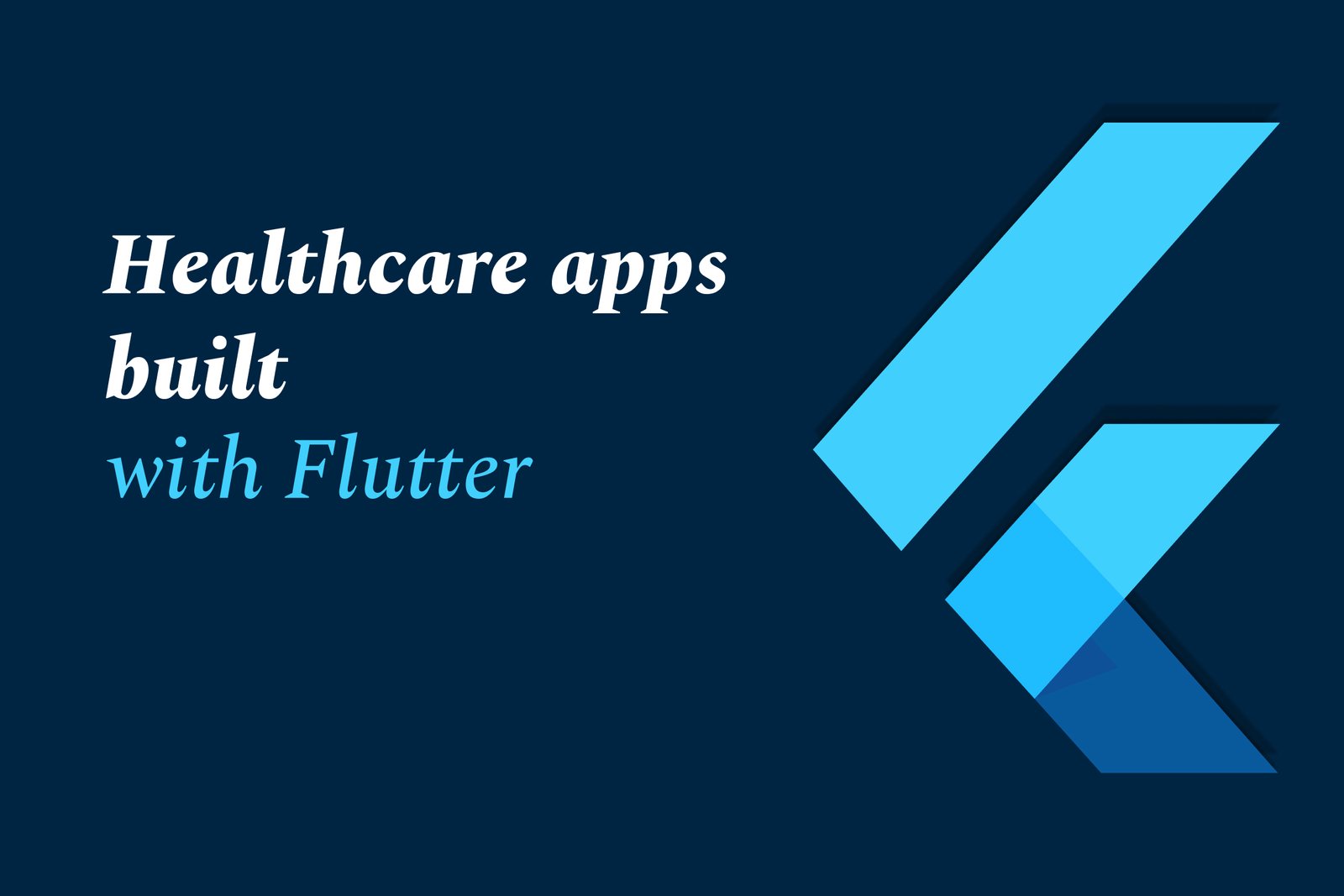Healthcare Apps Built with Flutter
Healthcare apps built with Flutter are cross-platform applications designed for patient management, fitness tracking, telemedicine, and more. Flutter's fast, customizable UI and single codebase enable efficient, secure, and high-performance healthcare solutions across devices.
Healthcare apps built with Flutter
1 ) Introduction to Flutter in Healthcare App Development
Flutter is an open source UI software development kit by Google used to build beautiful, natively compiled, multi platform applications from a single codebase. It supports mobile, web, desktop, and embedded devices, making it flexible and productive for healthcare app development.
2 ) Benefits of Using Flutter for Healthcare Apps
Cross platform development: Build apps that function smoothly on Android, iOS, web, and desktop with one codebase.
Fast performance: Compiles to ARM or Intel machine code and JavaScript for optimized speed.
Hot Reload: Enables quick iteration by updating code and instantly viewing changes without losing state.
Customizable UI: Provides control over every pixel to create adaptive, user friendly designs suitable for various screen sizes.
Rich ecosystem and developer tooling: Extensive widgets, libraries, and VS Code support facilitate robust healthcare app creation.
3 ) Examples and Use Cases of Healthcare Apps Built with Flutter
Patient management systems and unified patient view apps.
Care management solutions that streamline healthcare workflows.
Fitness and wellness apps that track activity, sleep, stress, and more (e.g., apps similar to Samsung Health).
Telemedicine and remote patient monitoring applications.
4 ) Integration with Healthcare Data Standards and APIs
Flutter apps can leverage standardized healthcare data models like HL7 FHIR using platforms like Microsoft Power Platform or Google Cloud Healthcare API. This interoperability supports synchronous and asynchronous data exchange, making Flutter ideal for secure and scalable healthcare data solutions.
5 ) Developer Resources and Support
Flutter’s official documentation and tutorials provide guidance on state management, networking, forms, animations, and adaptive UI design essential for healthcare applications.
Integration with Firebase for authentication, database, crash reporting, and analytics tailored towards mobile healthcare apps.
Support for Google Maps, in app payments, and multimedia integration to enrich healthcare app functionalities.
6 ) Security and Compliance Considerations
Flutter apps used in healthcare can be designed to safeguard sensitive patient information by integrating secure backend services and complying with industry regulations such as HIPAA, especially when leveraging cloud solutions and APIs that enforce data encryption and access controls.
Summary: Flutter enables developers to create versatile, high performance healthcare applications across platforms efficiently. Its compatibility with healthcare data standards and robust developer ecosystem makes it an excellent choice to build secure, scalable, and user friendly healthcare apps to improve patient care and operational efficiency.
https://justacademy.in/news-detail/flutter-india-summit-2025:-key-takeaways
https://justacademy.in/news-detail/flutter-forward-2025-recap
https://justacademy.in/news-detail/dart-3.2:-what’s-new-for-flutter-devs
https://justacademy.in/news-detail/breaking-changes-in-latest-flutter-version
https://justacademy.in/news-detail/flutter-ai-use-cases-in-fintech-&-healthcare
Related Posts
Java supports GDPR and data privacy by enabling secure data handling through encryption, controlled access, and precise data management. It allows developers to minimize PII exposure, ensure data confidentiality, and design workflows that comply with data protection regulations effectively.
Java code quality tools have evolved to include advanced static analysis, integrated security checks, and AI-powered code reviews. These updates help developers detect bugs, enforce coding standards, and enhance security, streamlining the development process and improving overall code reliability.
Java remains a cornerstone in big tech companies, evolving with modern features like records, pattern matching, and virtual threads. Its robust ecosystem, enhanced performance, and growing AI integrations keep it vital for both legacy systems and innovative new projects.
Java and CI/CD pipeline optimizations streamline Java application development by automating builds, tests, and deployments. They improve efficiency through parallelization, caching, and secure secrets management, enabling faster feedback loops and more reliable, scalable software delivery.
Java supports modern cryptography standards through its flexible Java Cryptography Architecture (JCA), enabling integration of advanced algorithms like AES, EdDSA, and post-quantum tools. Libraries like Bouncy Castle offer FIPS-certified, hardware-accelerated implementations for secure development.
Java 23 enhances record patterns by enabling concise, direct destructuring of record components within pattern matching, simplifying type checks and data extraction. This improvement boosts code readability and expressiveness by reducing boilerplate in handling immutable data classes.
Java remains a top choice for mobile app backends, powering scalable, secure, and high-performance server-side solutions. Latest trends include cloud-native microservices, reactive programming, and enhanced JVM optimizations, enabling efficient, flexible, and robust mobile backend development.
Java SE 24 and LTS Java SE 21 offer enhanced features and performance, while Apache Spark 4.0.0 introduces Scala 2.13 support and advanced ML and SQL capabilities. Together, they empower developers to build scalable, high-performance data applications with modern tools.
JUnit 5 modernizes Java testing with a modular architecture, improved assertions, and seamless Java 8+ support. Beyond JUnit, tools like Mockito and AssertJ enhance mocking and assertions, creating a powerful, flexible ecosystem for writing clean, efficient Java unit tests.
Java plays a pivotal role in cloud automation tools by providing a robust, platform-independent language used to build scalable automation frameworks like Jenkins and Selenium, enabling efficient CI/CD pipelines, testing, and orchestration across diverse cloud environments.










